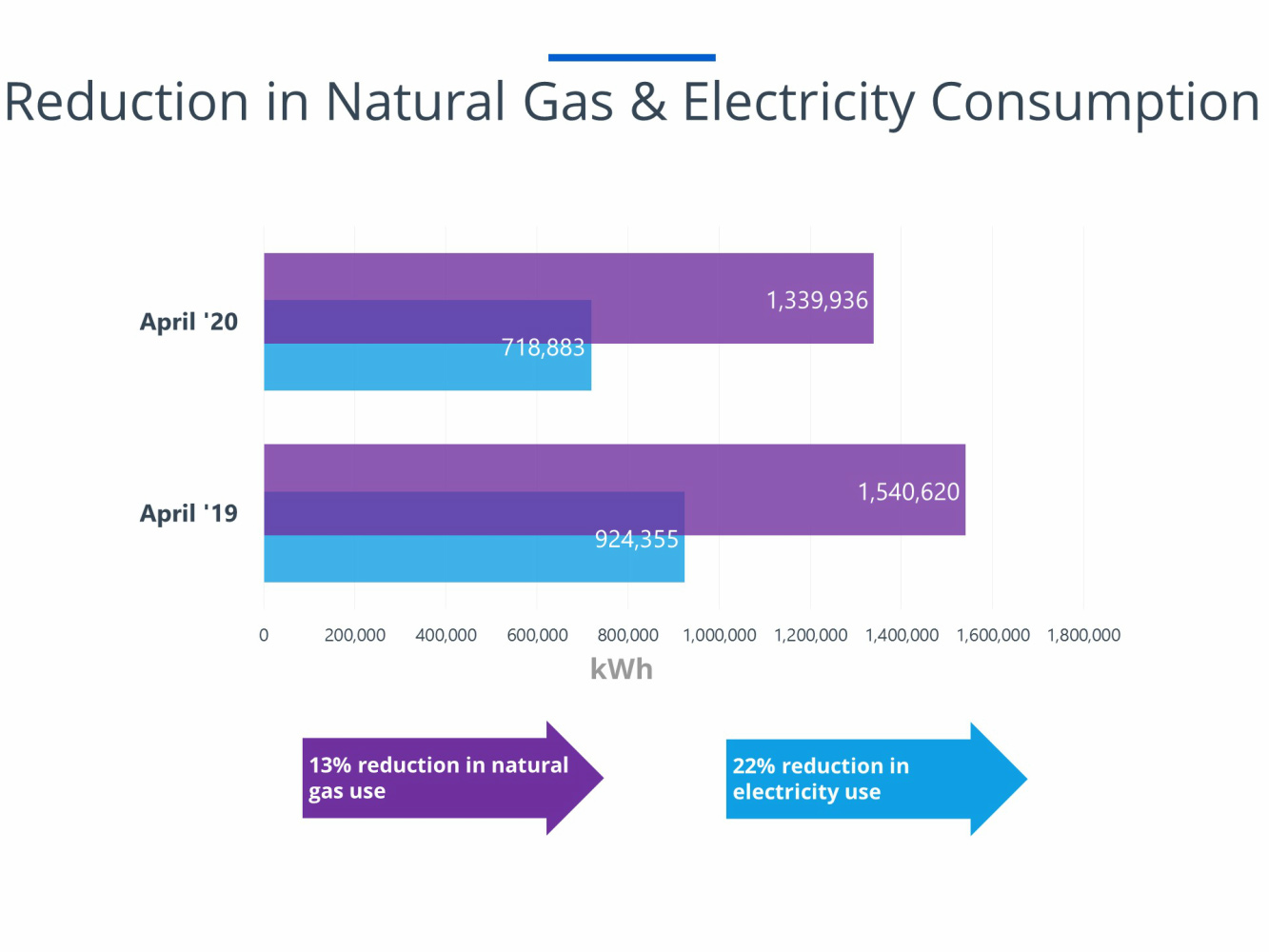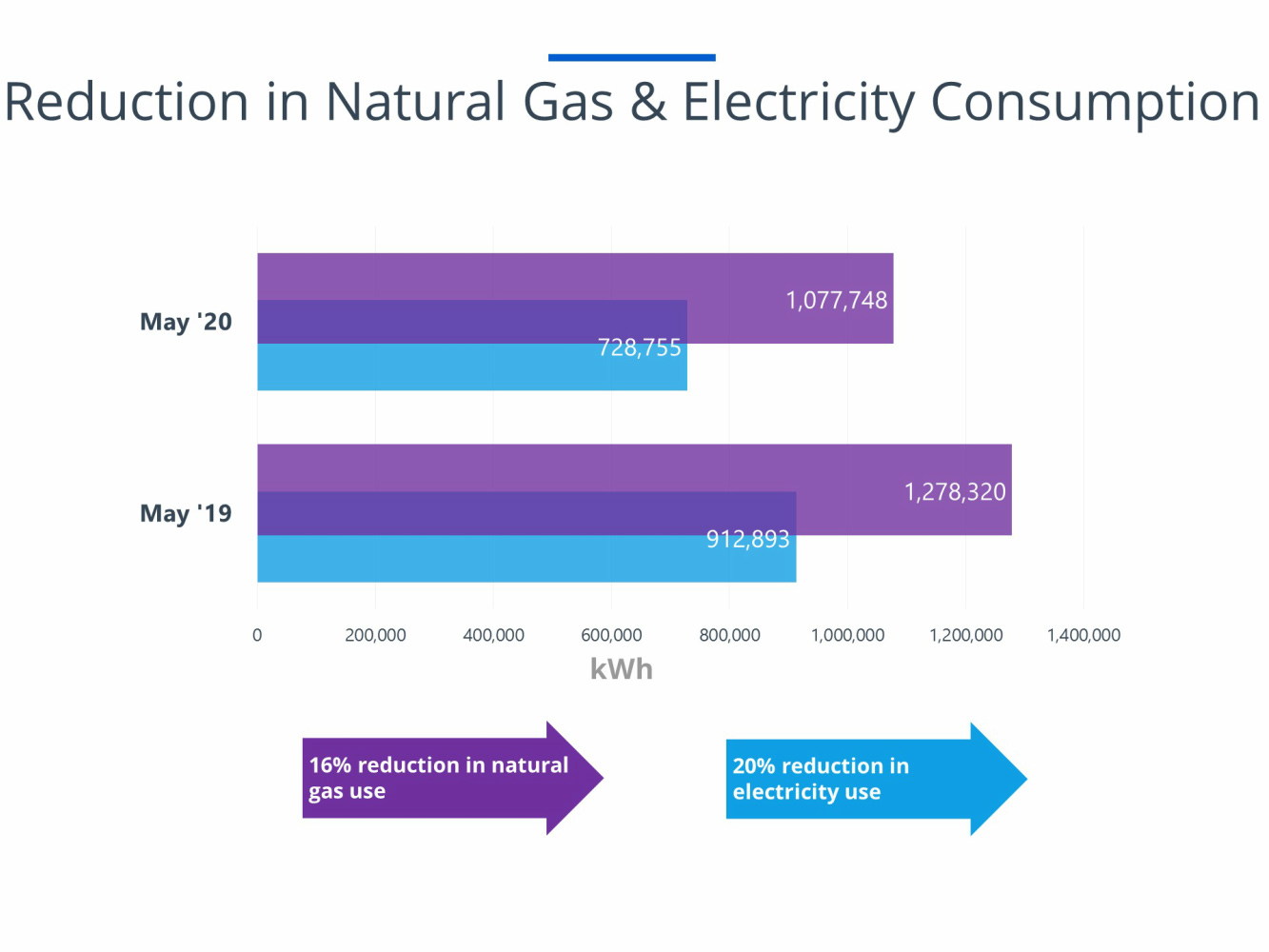What you can do to promote Campus Carbon Zero

The university’s Energy Working Group was founded in October 2019 and has been involved in developing and implementing workstreams to reduce energy consumption and associated carbon emissions, and ultimately drive down RGU’s carbon footprint.
As part of this, the university’s Energy Reduction Program aims to decrease RGU’s energy consumption by 15% (approx. £250k per annum) by 2023 against the 2015-16 baseline.
The recent period of lockdown has demonstrated a significant contribution to this target. A comparison between 2019 and 2020 energy and gas consumption within the periods of April and May (see figures) have revealed a reduction in our campus carbon footprint (*1) during the lockdown.
The total reduction roughly equates to around CO2 emissions from over 23 million smart phones being charged or 203 thousand pounds of coal being burnt. In Greenhouse Gas Emission terms, this equates to 39.8 passenger vehicles being driven for a year or 457,027 miles being driven by one passenger vehicle (*2).
While many of us are still predominantly working from home, plans are underway for staff to slowly return to campus, in a safe manner. As staff start to begin preparations for the new term there are small but significant ways in which we can continue in contributing to the UK Net Zero Carbon target. Implementing sustainable habits in the use of electricity, gas, transport, and food will help to sustain the environmental improvements we attained during the COVID-19 lockdown. Some of the ideas that we can implement, include:
Using Zip Taps
Did you know that people boil their kettles, on average, four times a day? If you fill a kettle to its full capacity it can take anything between 3 to 7 minutes to boil depending on its size and uses about 0.2 kWh electricity. While this figure may seem not much, given the number of kettles used across campus and the number of times they are switched on by individuals every day – this number add up to a big figure every month. Using zip taps ensure you are only using as much hot water as you need, avoiding wastage of energy and money.
Reducing the use of Individual Cars
The contribution of emissions from vehicles to air pollution is indisputable as plenty of studies have demonstrated a correlation between poor air quality and volume of traffic. Using cycles or walking just a couple of days a week will help the environment, with added demonstrable health benefits.
Sustainable Consumption of Food
The start of the lockdown for many, came as a complete shock as they were faced with barren food shelves in supermarkets resulting from panic buying. Soon, supermarket chains were pleading consumers to only buy what was essential forcing many people to reconsider their shopping habits. While supermarket stock levels may be returning to normal, it is worth continuing to follow the same sustainable habits and plan your meals to reduce food wastage. If faced with excess, you may freeze it, convert it to compost or donate it to food banks.
There is no doubt that COVID-19 has exacted a great toll on human life and the lockdown has had severe negative impacts on the economy; however, it has highlighted some of the environmental challenges posed by human activity. We do not need another pandemic to remind us of the positive changes brought by the lockdown and of the importance of supporting the UK Zero Carbon Target. Through small but meaningful actions, we can ensure that we do not reverse the green benefits we have seen over the last few months.
*1 The UK CO2 equivalent emissions factor due to electricity generation is 0.28307 kg CO2e per kWh. This factor is based on the carbon emissions generated by the UK power stations per kWh generated and includes other green-house gasses such as methane and nitrous oxide converted to their carbon dioxide equivalents.
*2 Calculated using Environmental Protection Agency’s Greenhouse Gas Equivalencies Calculator.


